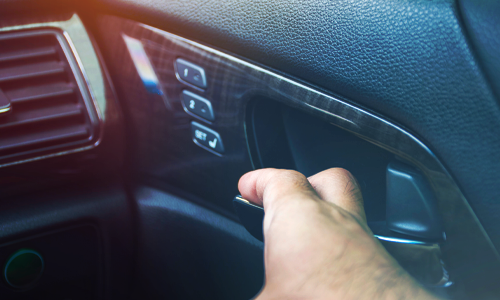The Highway Code has undergone a few changes recently. The changes are all designed to increase safety on the road, in recognition of some recent trends, such as the rise in numbers of cyclists and the introduction of electric vehicles. Here is a summary of the changes that all motorists should be aware of.
Know your responsibilities
A new ‘hierarchy of road users’ ranks pedestrians through to lorry and bus drivers in order of who is most at risk in a collision on the road. Pedestrians are most at risk, followed by cyclists, horse riders, motorcyclists, cars and taxis, vans and minibuses and finally large goods/passenger vehicles. While all road users are responsible for doing everything they can to ensure safety on the road, people in each category are responsible for reducing the danger they pose to all those ranked above them. So, for example, car drivers should be extra mindful of pedestrians, cyclists, horse riders and motorcyclists.

Give way at junctions
If you’re driving your car and want to turn in to or out of a junction and a pedestrian is crossing or waiting to cross, you should give way. Equally, if a bicycle, horse or horse-drawn vehicle is coming up on your inside when you want to turn into or out of a junction whilst driving, you should let them go first. You should not cut across other road users if it would cause them to stop and swerve. This also applies when changing lanes.

Give room on roundabouts
Drivers and motorcyclists should give room to more vulnerable road users (cyclists, horse riders and horse drawn vehicles) on roundabouts. That means not trying to overtake a cyclist, for example, in their lane and holding back to allow cyclists to turn across you as they go round. The revised Highway Code also tells motorists to be aware that cyclists, horse riders and horse-drawn vehicles have the right to use the left-hand lane all the way round a roundabout, regardless of which exit they are taking. It is up to motorists to give them the space to turn and not risk cutting across them.
Understand cyclists’ road position
On quiet roads, in slower-moving traffic and at the approach to junctions, cyclists are now advised to take a position in the middle of their lane. On busy roads with faster moving traffic, cyclists are advised to keep at least half a meter from the kerb. Cyclists are also advised that riding two abreast can be safer, particularly in large groups or when accompanying children or those who need more support when cycling on the road. Motorists should be aware of this advice and have patience with cyclists in such situations. In all situations, however, where a faster vehicle wants to overtake, cyclists should move across to make room when it is safe to do so, while keeping at least half a meter from the kerb.
Move well out when overtaking
If you’re overtaking a cyclist, give them at least 1.5m (5 feet) of clearance, and more if they are going faster than 30mph. For horses and pedestrians, leave at least 2m (6.5 feet), and when passing horses (whether they be led, ridden or as part of a horse drawn vehicle) your speed should not exceed 10mph If you can’t give them that amount of room or pass at the required speed safely, wait behind them until you can. Be aware too that the new Highway Code confirms that cyclists may overtake on the left or right of slower-moving or stationary vehicles, so check both mirrors if you’re in traffic and you start moving again.
Look before opening doors
There is new advice for people when getting out of a vehicle, to help avoid opening their door into the path of a cyclist or other vulnerable road user. When opening the door, you should use the opposite hand to the side of the door you are opening. For example, if opening the right-hand (driver’s) door, use your left hand. This makes you naturally look over your shoulder, making it more likely for you to see approaching cyclists or pedestrians.

Charge up responsibly
There is new guidance for drivers of electric vehicles when it comes to using charge points. The first point is to park close to the charge point so when you plug your car in you don’t leave a long length of cable as a potential trip hazard. You are also advised to display a warning sign if you can and to replace the cable neatly back where you found it once you are done.
The overriding message of the Highway Code is, and always has been, for all road users to show care and consideration of others and to do everything in their power to avoid causing danger. The changes to the Code serve to remind road users of this responsibility and offer useful guidance for situations where more vulnerable road users could be especially at risk.
You can find all the changes and additions to the Highway Code in detail here.
You might also be interested in
Understanding your car cover and when it applies
Check out our video for top car cover tips.
FCA changes to insurance and how they may affect your premium
The Financial Conduct Authority (FCA) – an insurance industry regulator – recently introduced new regulation to insurance pricing to take effect on 1 January 2022.


